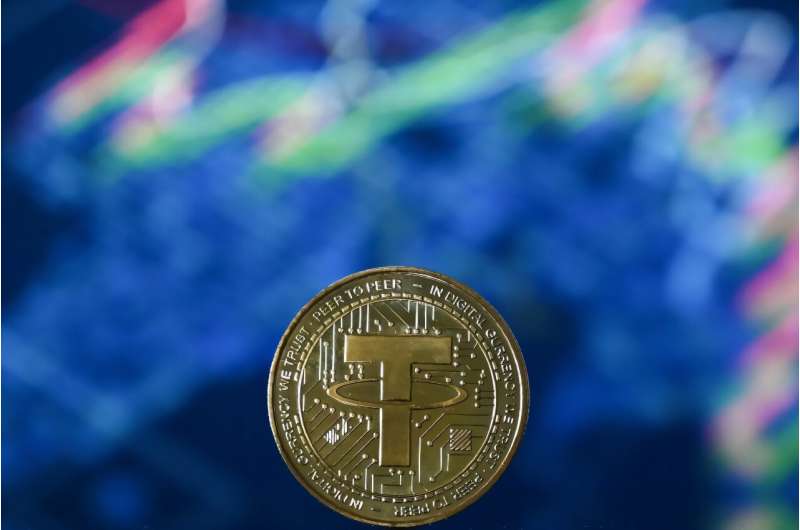
Stablecoins, which are cryptocurrencies tied to traditional assets, are becoming increasingly popular. The US Senate is slated to vote on a bill to oversee these digital currencies on Tuesday.
However, as stablecoins inch closer to becoming a regular part of the financial landscape, experts caution that limited regulations might expose investors and the overall financial system to risks.
What Exactly Are Stablecoins?
Stablecoins serve an important function in the cryptocurrency world by allowing users to trade digital assets without depending on traditional banks; they utilize a decentralized system known as blockchain instead.
In contrast to fluctuating cryptocurrencies like Bitcoin, stablecoins are designed to mirror the value of traditional assets, for instance, the US dollar or gold, offering a more stable option.
Tokens like Tether and USDC are tied to the dollar and are backed by reserves held by their issuing companies.
These coins are especially valuable for international transactions, allowing for “quick, low-cost cross-border payments,” as noted by Dessislava Aubert, an analyst at the crypto research firm Kaiko. This feature is particularly beneficial in emerging markets like Argentina, Nigeria, and Turkey, where access to foreign currency and banking services is often restricted.
The market for stablecoins skyrocketed to $246 billion in May, a dramatic rise from just $20 billion in 2020, according to Deutsche Bank.
Interestingly, the number of transactions using stablecoins in 2024 has already surpassed those processed by Visa and Mastercard.
This month, USDC’s issuer, Circle, was added to the New York Stock Exchange, further highlighting the growing influence of stablecoins.
Why is the US Attempting to Regulate Stablecoins?
The US aims to ensure the reliability of stablecoins by requiring issuers to maintain adequate low-risk, liquid assets such as US dollars and Treasury bills.
This move could potentially elevate demand for US debt and the dollar itself.
The proposed regulations would mandate regular audits for major stablecoin issuers and impose stricter guidelines for launching new tokens.
These measures have become increasingly pressing following the 2022 collapse of the Terra stablecoin, which demonstrated that these tokens could “depeg,” or lose their connection to the assets they are intended to represent.
Experts, like Murat Kantarcioglu, a computer science professor at Virginia Tech, emphasize the importance of audits and checks to mitigate risks posed by potentially untrustworthy organizations or cyberattacks.
A loss of consumer trust in stablecoins could have repercussions beyond the crypto domain, affecting the assets that support them.
Are the Proposed Regulations Sufficient?
Aubert warns that the new regulations might hinder startups from launching stablecoins, leading to a scenario where large tech companies dominate the market. Reports indicate that companies like Amazon and Walmart are contemplating their own stablecoins for customer transactions.
Opponents of the bill, particularly from the Democratic party, argue that it fails to address concerns related to speculation and political conflicts of interest tied to stablecoins.
For instance, a stablecoin named USD1 has been launched with connections to former President Donald Trump’s family and is used by the Emirati fund MGX.
Moreover, even with new regulations in place, losses resulting from issuer bankruptcies would not be covered by government insurance, unlike bank deposits, which enjoy up to $250,000 in insurance coverage, according to Aubert.
How is International Regulation Shaping Up?
In Europe, a new regulation called MiCA, effective since late December, sets the stage for stablecoin issuance.
Countries like the UK, South Korea, and Brazil are also advancing their regulatory frameworks.
In contrast, China prohibited cryptocurrencies in 2021 and is instead working on its own central bank digital currency, known as the e-yuan.
Russia is exploring a stablecoin that would be backed by the ruble or friendly currencies such as the yuan.
If you would like to see similar Tech posts like this, click here & share this article with your friends!

